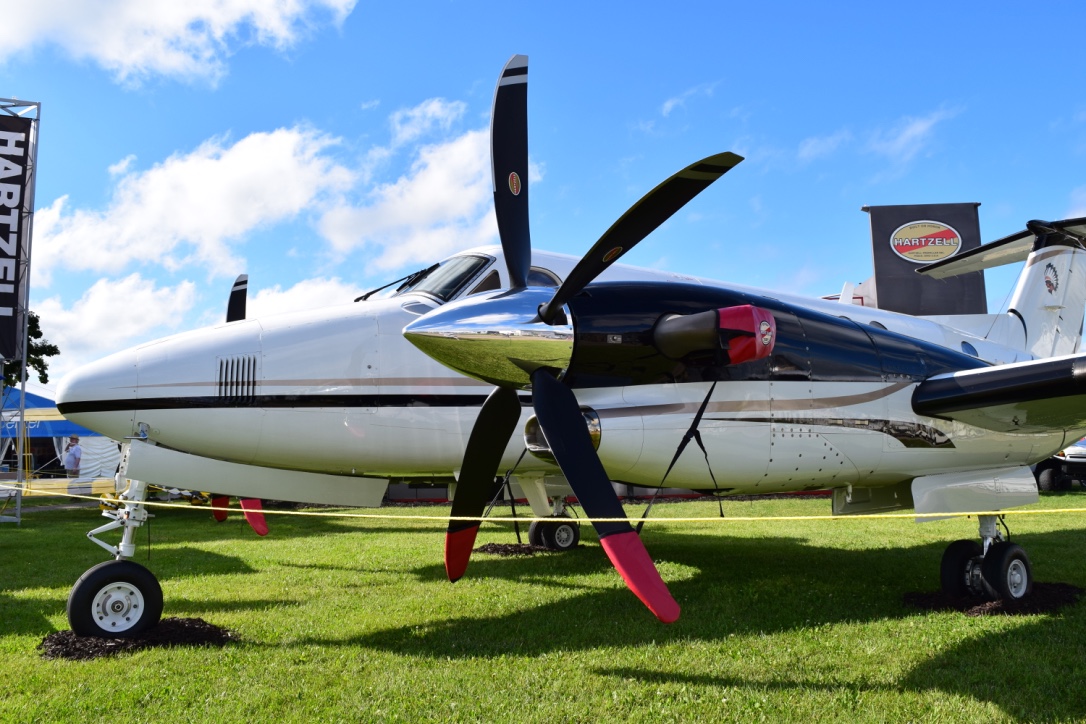
With the combination of a turbine jet engine and constant speed propeller, turboprop aircraft offer advantages in reliability, efficiency, and versatility. Today, turboprops are flown for a wide range of missions including charter flights, cargo transport, and even high-tech agricultural applications. But when were turboprop aircraft first introduced, and how have they evolved in the changing aviation world? We’re taking a closer look at the origin of turboprop aircraft.
The first turboprop engine was patented in 1929 by György Jendrassik, a Hungarian physicist and engineer. However, it wasn’t until after WWII that the aviation world became interested in using turboprop engines to power aircraft. In 1945, a modified British Gloster Meteor fighter was fitted with two Rolls-Royce RB.50 “Trent” turboprop engines driving 5-bladed propellers. This test aircraft became the first turboprop-powered aircraft to fly, though it never entered production.
Rolls-Royce went on to develop two additional turboprop engines, the Clyde and the Dart. In 1948, the Vickers Viscount was introduced as the first commercial airliner to use turboprop power. Equipped with four Rolls-Royce Dart turboprop engines, the British aircraft had a pressurized cabin and was capable of carrying 40 to 65 passengers.
When compared to piston-engine aircraft, the turboprop Viscount offered a smoother flight with less noise and vibration. With better fuel efficiency and the ability to carry a large number of passengers, the Viscount also offered lower operational costs than jet airliners. The turboprop airliner soon became highly regarded for its comfortable, luxury flying experience.
The first U.S. turboprop airliner was the L-188 Electra, produced by Lockheed in the late 1950’s and used first by American Airlines. However, the aircraft’s success was short-lived once airliners replaced turbprops with jets as the Golden Age of passenger air travel emerged.
Turboprop aircraft use the power of a gas turbine to drive the propeller and generate thrust. By taking advantage of the aerodynamic propulsion produced by the propeller, turboprops can outperform jet engines in terms of efficiency at speeds slower than 400 knots. And although turboprops generally have lower service ceilings compared to jets, they also burn less fuel per passenger for the same amount of flying time, making them a more cost-effective solution for shorter flights.
Modern turboprops also have a level of versatility that’s unmatched by light jet aircraft. Turboprops offer impressive short take-off and landing capabilities, enabling pilots and passengers to access remote locations around the world.
Some of today’s turboprop aircraft include the Beechcraft King Air, Cessna Caravan, Pilatus PC-12, and Daher TBM aircraft. At Hartzell Propeller, we’re proud to offer the world’s largest selection of composite propellers for turboprop applications. One of the latest designs added to Hartzell’s growing family of composite blades for turboprops was recently certified on the Beechcraft King Air 350.